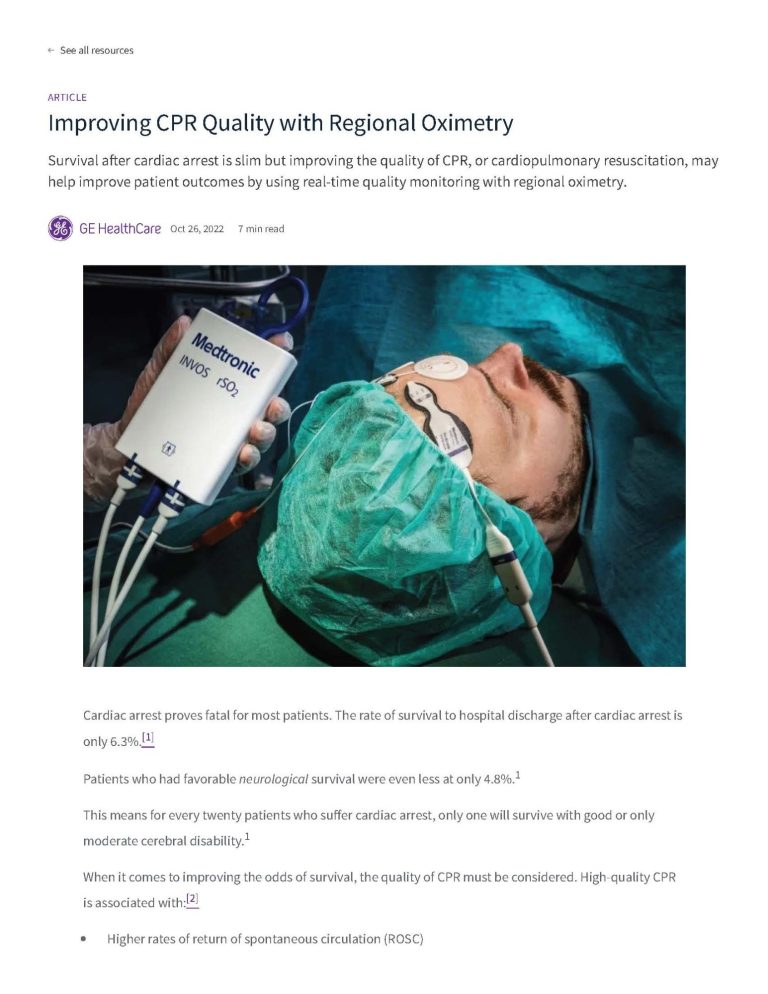
The ASAP cardiac arrest algorithm is the only protocol that incorporates the use of regional oximetry.
Conclusions: Cerebral oximetry allows real-time, noninvasive cerebral oxygenation monitoring during
cardiopulmonary resuscitation. Higher cerebral oxygenation during cardiopulmonary resuscitation is
associated with return of spontaneous circulation and neurologically favorable survival to hospital
discharge.

The Science

Demonstrated effectiveness in the pre-hospital setting.
Wow. Do we bag heavy!
The Advantages of Employing a Pediatric Bag-Valve-Mask for Adult Cardiac Resuscitation.
This study provides compelling evidence. It reinforces the notion that utilizing adult bag-valve masks (BVMs) often result in the delivery of excessive tidal volumes, presumably more in high-stress scenarios such as cardiac arrest. The findings indicate that utilizing a pediatric BVM significantly enhances the ability to achieve target tidal volumes.

Reduce excessive BVM Presures and adverse effects.
The accompanying video provides a visual representation of the volume of 500 cc. The accurate administration of tidal volume is essential.
The ASAP Protocol advocates for the utilization of a Pediatric AMBU bag to achieve the recommended tidal volume of 500 cc and to mitigate the risks associated with overinflation.
The ASAP Protocol curriculum serves as a substitute for specific American Heart Association (AHA) ADULT certifications, including CPR/AED for lay responders and Basic Life Support (BLS) for Healthcare Providers (HCP). Furthermore, the ASAP Pro certification is an addition to Advanced Cardiovascular Life Support (ACLS) courses or as a stand-alone course for ACLS certified providers.
We need your consent to load the translations
We use a third-party service to translate the website content that may collect data about your activity. Please review the details in the privacy policy and accept the service to view the translations.
